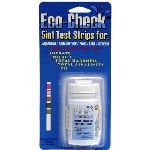Think that a sewage leak can’t happen? Think that bacteria from sewage can’t somehow wind up near in a body of water near you? Think again. Accidental equipment failures happen all the time and as an example, an equipment failure in a South Carolina facility recently resulted in 2,000 gallons of household sewage reaching a local waterway.
|
Raw sewage leaks into the environment sometimes contain high levels of potentially dangerous bacteria and or other unwanted water contaminants. Health officials perform testing to make sure levels dissipate properly as a result of dilution or ‘cleaning methods’. |
“COLUMBIA, SC (WIS) – The Department of Health and Environmental Control is monitoring the cleanup of a Richland County creek after a sewer overflow sent thousands of gallons of raw sewage into a nearby creek.
DHEC spokesman Adam Myrick said the spill happened around 1:00pm on Alconbury Court, near Broad River Road. Myrick said about 2,000 gallons of sewage entered Stoops Creek before Alpine Utilities was able to fix the overflow.” ( source )
So… What does that mean for residents in the area? In the grand scheme of things, not a whole lot since the leak contained household grade sewage which quickly dissipates into the environment in most cases. In the immediate area of the spill, however, the organization responsible for the leak will, by law, need to take the necessary precautions to make sure all hazardous material gets neutralized and/or removed.
The danger of accidental spills?
We believe the true danger of accidental waste water and sewage spills lies in how long it takes for someone to realize a problem exists. If a water treatment or storage facility does not have proper monitoring devices in place to keep an eye on things, tragic incidents where large amounts of unfiltered, unsafe water enters the environment can occur before anyone has a clue that a problem even exists.
Thankfully 99.999% (estimating, of course!) of all water treatment facilities — public and private — have up-to-date, current and fully functional equipment that never fails. Right?
So… What can the average person do?
Environmental watchdogs perform routine water testing in areas where they suspect potential violations. They cannot, however, test every body of water or water source so therefore, we encourage average citizens to keep tabs on water quality in their immediate surroundings.
While the common homeowner probably won’t want to invest in the equipment used by some of the watchdog organizations because of cost, simple test kits such as the Well Driller Master Test Kit make repeated testing of water sources for a series of water quality parameters a breeze.
Don’t let the name ‘well driller test kit’ fool you. The water parameters tested by that kit could very easily pertain to pretty much any water from any source… and not just water coming from wells.
Looking for something even simpler, yet still quite useful? Take a look at the Eco-Check Test Strips made by SenSafe / WaterWorks which allow users to monitor five key indicators of environmental water quality at the same time: nitrate, nitrite, hardness, alkalinity, and pH.
Radical shifts in any or all of those five parameters could mean more serious contamination issues exist in a water supply.
It all comes down to this: A little bit of testing could warn of a potentially big problem.
It’s your water, your health… and ultimately your life!








